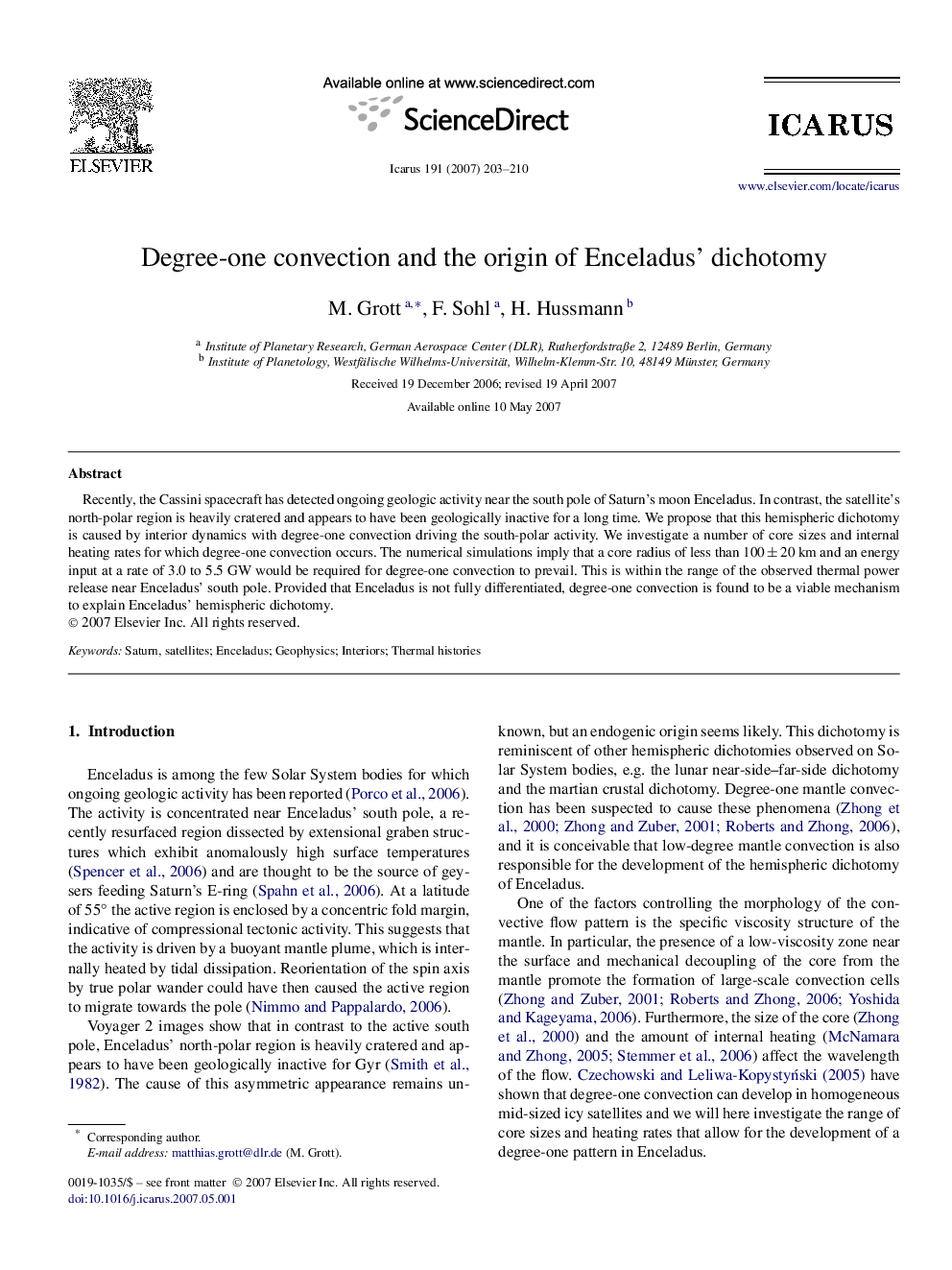| Article ID | Journal | Published Year | Pages | File Type |
|---|---|---|---|---|
| 1775211 | Icarus | 2007 | 8 Pages |
Abstract
Recently, the Cassini spacecraft has detected ongoing geologic activity near the south pole of Saturn's moon Enceladus. In contrast, the satellite's north-polar region is heavily cratered and appears to have been geologically inactive for a long time. We propose that this hemispheric dichotomy is caused by interior dynamics with degree-one convection driving the south-polar activity. We investigate a number of core sizes and internal heating rates for which degree-one convection occurs. The numerical simulations imply that a core radius of less than 100±20 km and an energy input at a rate of 3.0 to 5.5 GW would be required for degree-one convection to prevail. This is within the range of the observed thermal power release near Enceladus' south pole. Provided that Enceladus is not fully differentiated, degree-one convection is found to be a viable mechanism to explain Enceladus' hemispheric dichotomy.
Related Topics
Physical Sciences and Engineering
Earth and Planetary Sciences
Space and Planetary Science
Authors
M. Grott, F. Sohl, H. Hussmann,
